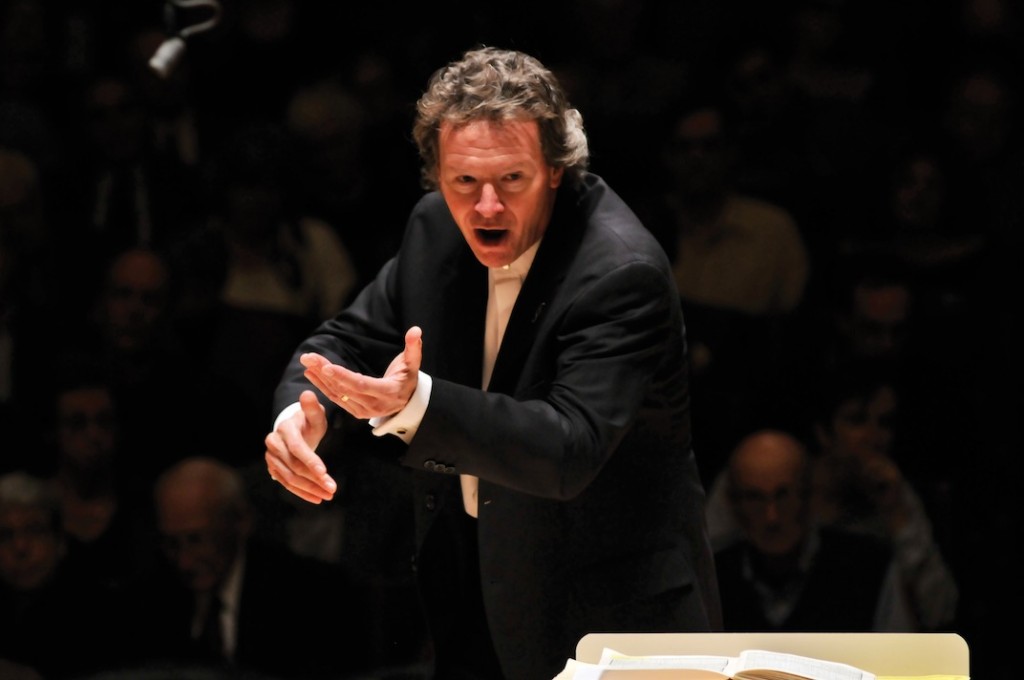Handel & Haydn opens season with a moving and expressive Mass in B minor

Harry Christophers opened the Handel and Haydn Society’s season with Bach’s Mass in B minor Friday night at Symphony Hall.
Bach’s Mass in B minor is not only the culmination of his life as a composer, but an exemplar of his ability to mine dramatic depth from even the most well-trodden sources.
Friday night at Symphony Hall, Bach’s mass made a sterling opener for the Handel and Haydn Society’s 199th season. Conductor Harry Christophers, through his characteristic gestures and energetic presence, led the way.
From the doleful lines of the opening Kyrie to the more subdued strains of the Credo and angelic Sanctus, Christophers guided the H&H chorus and period-instrument orchestra in a rich tapestry of sound. Throughout, the ensemble performed with spring-water clarity. A trio of trumpeters and thundering timpani added splendor and power to the work’s celebratory choruses.
But the Mass in B minor possesses many intimate moments as well. Woodrow Bynum’s rich bass voice was complemented by a small band of accompanying winds in the aria Quoniam tu solus sanctus. The horn player’s cracked notes distracted from the churning melodic figures, but happily, the bassoon duo helped bring the phrases into focus. The oboe and oboe d’amore wove sweet countermelodies with Margaret Lias’s lovely alto voice in Qui sedes.
Soprano Teresa Wakim and tenor Matthew Anderson rendered their duet Domine Deus with a dance-like feel and ringing tone. The solo flute added limpid accompaniment. Aisslinn Nosky supplied a soaring and delicate violin line over the frolicking rhythms of the Laudamus te, which soprano Catherine Hedberg sang with soft resonance.
Equally fine was David McFerrin’s warm and clear voice in the bass aria Et in Spiritum Sanctum. Tenor Stefan Reed delivered the Benedictus with sweet tone, and sopranos Thea Lobo and Margot Rood brought a supple blend and flow to the Christe eleison.
Some of the more affecting moments came in the mass’s second part, where Christophers led the Et incarnatus and Crucifixus with special intensity. The chorus’ somber phrases and orchestra’s spacious sighing motives gave the music a poignant sorrow. The following Et resurrexit exploded with energy from strings, trumpets, and timpani. Even the softer sections burbled with rhythm from the woodwinds’ crisp playing.
But the most afffecting music came near the end, with alto Emily Marvosh delivering a dark, silvery Agnus Dei. In setting the text, Bach relied on numerous repetitions of the phrase “peccata mundi” (sins of the world). Here, the subtle shake in Marvosh’s voice gave the aria an operatic weight and depth, making such a concept tangible for even the least religious of listeners. The opening lines of the final chorus, Dona nobis pacem, bloomed slowly from the ensemble’s low voices. As the melodies layered upon one another, reaching heavenward in a peaceful conclusion, for an instant, all seemed right with the world.
The Mass in B minor will be repeated 3 p.m. Sunday at Symphony Hall. handelandhaydn.org
Posted in Performances